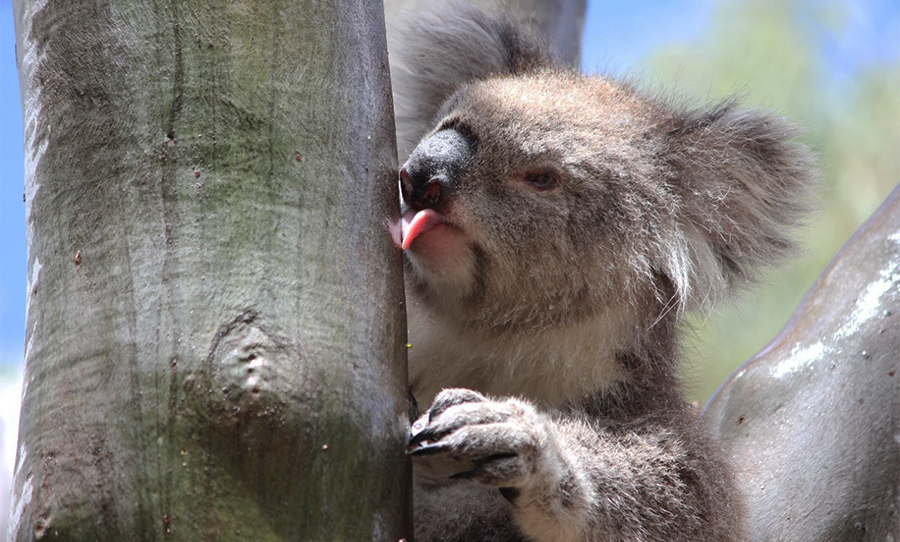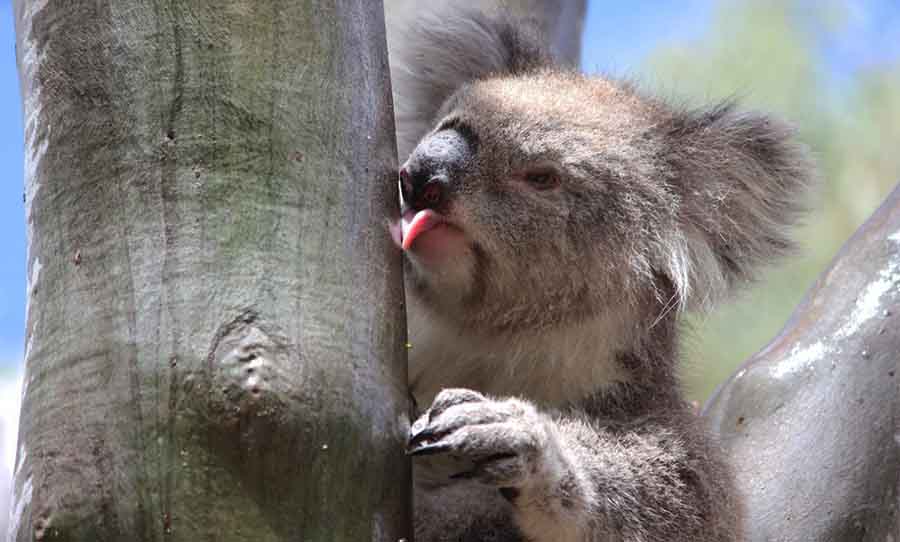Unusual observations over a 13-year period indicate that koalas hydrate by licking tree trunks, instead of simply chomping eucalyptus leaves.
The study suggests they “may have stronger reliance on free water than previously thought.”

The newly-observed drinking behaviour of koalas is known as stemflow, which refers to licking water that runs down the surface of tree trunks.
46 observations were taken between 2006 to 2019 across a range of weather conditions, mostly at You Yangs regional park in Victoria.
“We have observed [koalas] licking water from tree trunks,” says University of Sydney ethologist Dr Stephanie Mella. “This significantly alters our understanding of how koalas gain water in the wild. It is very exciting.”
Dr Mella, who led the study, says it’s important to distinguish between normal and unusual behaviours to understand the needs of animals. The researchers are hopeful that the results will inform koala conservation efforts in the future.
It was previously thought that koalas gained the majority of their water from the moisture found in leaves.
“Koalas have been alleged to never drink free water in the wild, or to drink only occasionally. Drinking behaviour has often been considered unusual and attributed to disease or to severe heat stress,” Dr Mella says.
Severe lack of rainfall and record temperatures mean Australia is suffering one of the worst dry periods in history. Stemflow behaviour relies on koalas having regular access to water –something that’s tough in times of drought.
“Koalas may suffer serious detrimental effects if lack of rain compromises their ability to access free water,” Dr Mella says.
The marsupials spend most of their time in eucalyptus trees on a diet of eucalyptus leaves. A common misconception is that koalas find a natural high in these leaves and become lethargic.
In fact, the eucalyptus leaf is so low in nutrients that koalas need to snooze for up to 20 hours per day, as their diet requires so much energy to digest.
“Koalas are nocturnal animals, so they are only active at night, and they are arboreal,” Mella states.
“[This] means that they live in trees and rely on them for food, shelter and, as we just discovered, also for drinking.”
Read next: These sea angels are not as angelic as you think



